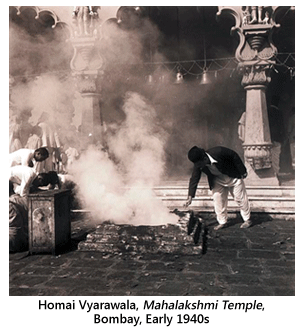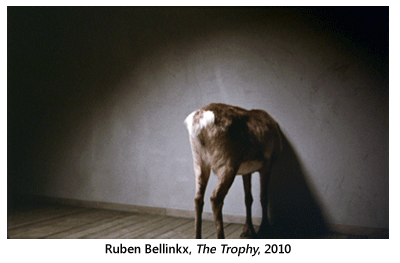- Prelude
- Editorial
- A Conversation with Sheela Gowda
- The DIY Artist with a Mission
- Discovering Novel Horizons
- A Conversation with Raqs Media Collective
- Manjunath Kamath
- Jitish Kallat- the Alchemist
- The Artist and the Dangers of the Everyday: Medium, Perception and Meaning in Shilpa Gupta's work
- An Attitude for the Indian New Media
- Weave a Dream-Theme Over Air or a Medium like Ether
- Installation in Perspective: Two Outdoor Projects
- Towards The Future: New Media Practice at Kala Bhavana
- Workshop @ Facebook
- Desire Machine: Creating Their Own Moments…
- Typography: The Art of Playing with Words
- Legend of a Maverick
- Dunhill-Namiki
- The Period of Transition: William and Mary Style
- The Beauty of Stone
- Nero's Guests: Voicing Protest Against Peasant's Suicides
- Patrons and Artists
- The Dragon Masters
- What Happened and What's Forthcoming
- Art Chennai
- Art Events Kolkata
- Winds of Change
- Art Bengaluru
- Mumbai Art Sighting
- Musings from Chennai
- In the News
- Previews
- Ascending Energy, Merging Forms: Works by Satish Gujral
- Re-visiting the Root
- The Presence of Past a New Media Workshop
- Taue Project
ART news & views
Mumbai Art Sighting
Volume: 3 Issue No: 15 Month: 4 Year: 2011
February – March 2011
by Jasmine Shah Varma
Homai Vyarawala: A Retrospective
One of the challenges the first known Indian woman photographer faced was that she couldn't attribute her first professional pictures to herself. Her work had to be signed by her husband to find acceptability. Starting from such hurdles to capturing some of the historical moments of Indian history,  Homai Vyarawala's huge bank of images shot over several decades forms one of the most interesting retrospective journeys. The exhibition is on at The National Gallery of Modern Art until April 10, 2011.
Homai Vyarawala's huge bank of images shot over several decades forms one of the most interesting retrospective journeys. The exhibition is on at The National Gallery of Modern Art until April 10, 2011.
Curated by Sabeena Gadihoke the collection includes images that Vyarawala took as a photojournalist for British news agencies and Indian publications such as the Illustrated Weekly. Her repertoire includes pictures of India's Independence, coronation of the first Indian Prime Minister, Mahatma Gandhi's funeral, to everyday, social life of the '40s to '60s in Mumbai and Delhi. In her anecdote about the picture of Pandit Jawaharlal Nehru's coronation she mentions how she was almost not allowed to take a picture of this momentous event because she was considered less patriotic as she worked for non-Indian news agencies. The exhibition also includes biographical pictures including a few with her family, her humble background in a small tenement, her classmates at the J J School of Art, images peppered with anecdotes and special mentions. Through the personal and everyday picture stories one can see her attempt to chronicle the women of her times whether they be in the fire brigade or learning sculpture at the art school or training as nurses back in the '30s and '40s. Apart from politically relevant images her repertoire includes the social and cultural vignettes of those times.

In a recent interview, the 97-years old photographer was asked what was that one picture she would have liked to have shot, but could not. She mentioned then, as she has in the exhibition text displayed at the NGMA that the one event that she regrets not being able to attend was the prayer meeting in 1948 when Mahatma Gandhi was assassinated.
Viewing images of the past events in retrospect brings a level of astonishment about the most decisive moments in history like the Partition of India. Vyarawala's picture shows a room with a few people raising their palm to vote in favour of the Partition. Looking back at the aftermath, one shudders at the image of just a few hands in the air that shaped history and the lives of so many.
The Retrospective of more than 150 images is a journey back to view India in its nascence as an independent nation, its struggles and celebrations, the elite and the common man's life, the political and social arenas of the time past. Also on display is an array of cameras that Vyarawala used.
Ruben Bellinkx - The Trophy
There's a history of use of animals as metaphors in art and literature. Ruben Bellinkx, an artist from Belgium, takes a cue from the convention in his video-based works in the solo show titled The Trophy. The first work one encounters at Gallery Maskara is a three-part projection of dogs trying to get a piece of an ordinary wooden chair. In the first video of The Musical Chairs one dog is seen in a bare room barking and gnawing the chair repeatedly. The second video has three dogs competing to chew off parts of the chair. The third one shows the aftermath, the chair torn apart to pieces and the dogs holding their winning trophies. Various phrases come to mind while watching this video like 'barking up the wrong tree' and 'every dog has his day'. It evokes the picture of basic human nature where the chair, a metaphor for the seat of power, is often fought over for its futile tokenism than for any larger purpose. Once the objective is achieved, the trophy seems quite uninteresting.
It evokes the picture of basic human nature where the chair, a metaphor for the seat of power, is often fought over for its futile tokenism than for any larger purpose. Once the objective is achieved, the trophy seems quite uninteresting.
Another work titled The Trophy has two projections and the screens are displayed back to back. The first part has a deer trophy; the stuffed animal is seen mounted on a wall. At first it appears to be what one would expect a trophy to be. Several minutes pass and the camera continues to be in the same position until we see a slight movement in the eyelashes and then perhaps one in the neck and the flaring of nostrils actions that are several minutes apart and subtle, making you wonder if you imagined the movement or it really happened. Moving along to the second projection you see the rest of the body of the deer, legs, tail and the body upto the neck. The head, on screen one is separated from the body (on screen two) by the wall. The body appears absolutely still to begin with. But as the camera continues its focused angle one begins to imagine or actually see the soft rhythm of breathing on the deer's body. The imagery itself is symbolic and lends to further interpretations and thoughts. Bellinkx's engagement with the reality and perception, with encountering the unexpected in ordinary situations and fascination to observe beastly behaviour that rings familiarity is aimed at evoking a wake-up call in our thought process and to shake the assumptions one makes. It is refreshing to come face to face to basic human tendencies via unexpected situations that he creates in his settings.
The show concluded on March 31.
Among Other Shows
 In Memoirs of Tanaz and Vimala, 30-year old Remen Chopra from Delhi deals with the role of photographic documentation from the past and the present. She blurs the boundaries of the two through layers of photographs and drawings thus trying to create questions about where one is at. Any young artist starting out would face the weight of art history and contemporary practices when trying to find a fresh voice. It seems the works stem from the question of contextualising oneself in the diversity and multiple time zones one lives in. A practicing artist is especially caught in the predicament and uncertainty to what path to follow. The show concluded on March 29.
In Memoirs of Tanaz and Vimala, 30-year old Remen Chopra from Delhi deals with the role of photographic documentation from the past and the present. She blurs the boundaries of the two through layers of photographs and drawings thus trying to create questions about where one is at. Any young artist starting out would face the weight of art history and contemporary practices when trying to find a fresh voice. It seems the works stem from the question of contextualising oneself in the diversity and multiple time zones one lives in. A practicing artist is especially caught in the predicament and uncertainty to what path to follow. The show concluded on March 29.
The India Fine Art gallery presented a group show titled Hy. Times showcasing the young and upcoming artists from Hyderabad. Going by the assortment of 10 artists in this exhibition it appears the Hyderabad artists continue to bridge the gap between tradition and contemporary visual practices. There is a coming together of folklore and today's times in terms of the vocabulary and content. Primarily figurative, the Hyderabad show gives a break from the excessively politically oriented art seen elsewhere. The exhibition concluded on March 15. The gallery's next presentation is Neela Varnam, recent works by Ramesh Gorjala who has created his own visual language, departing from the tradition of Kalamkari painting. The show concludes on April 1.